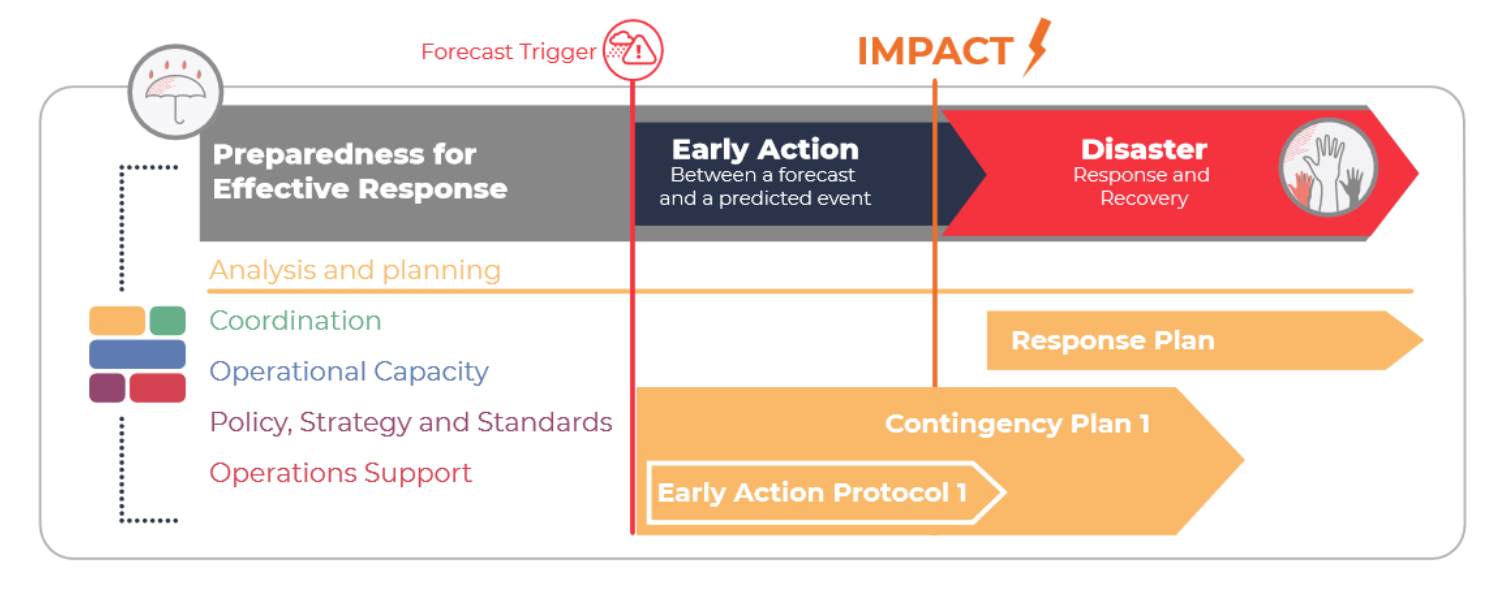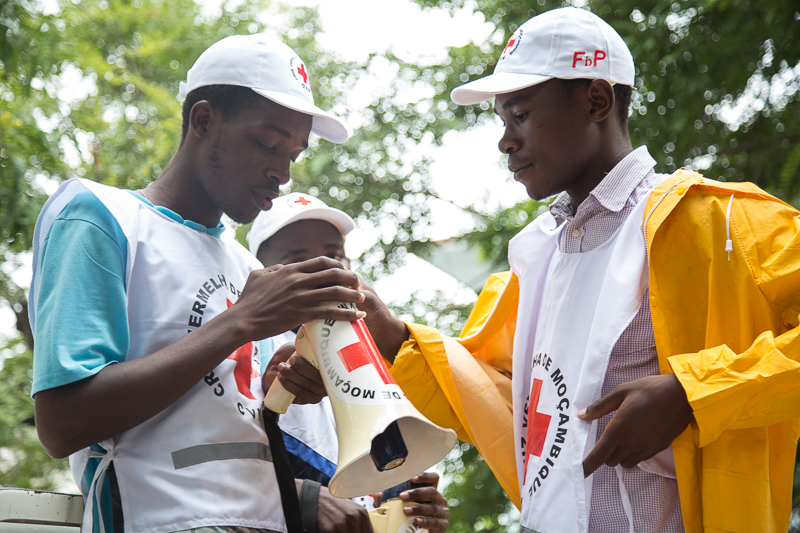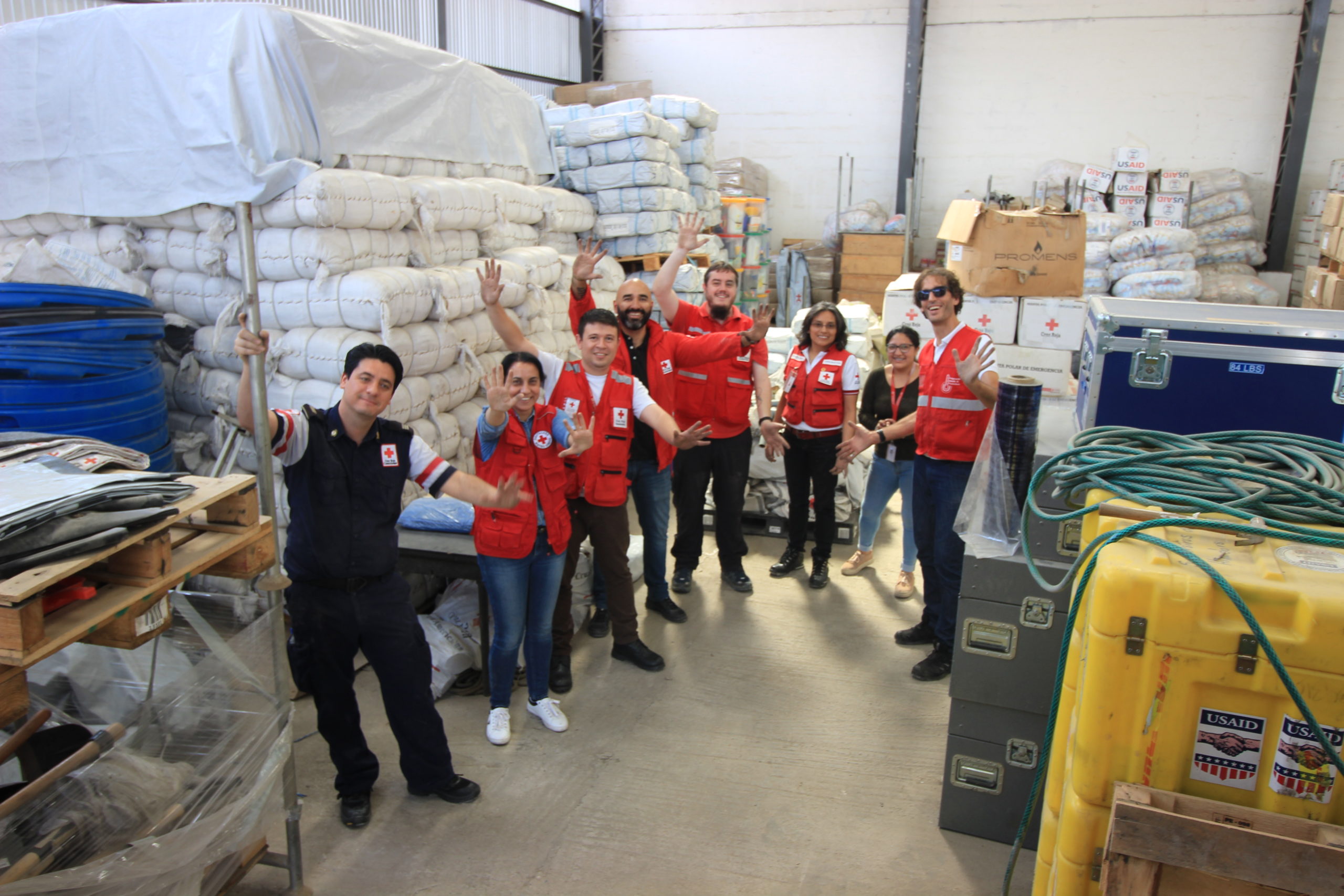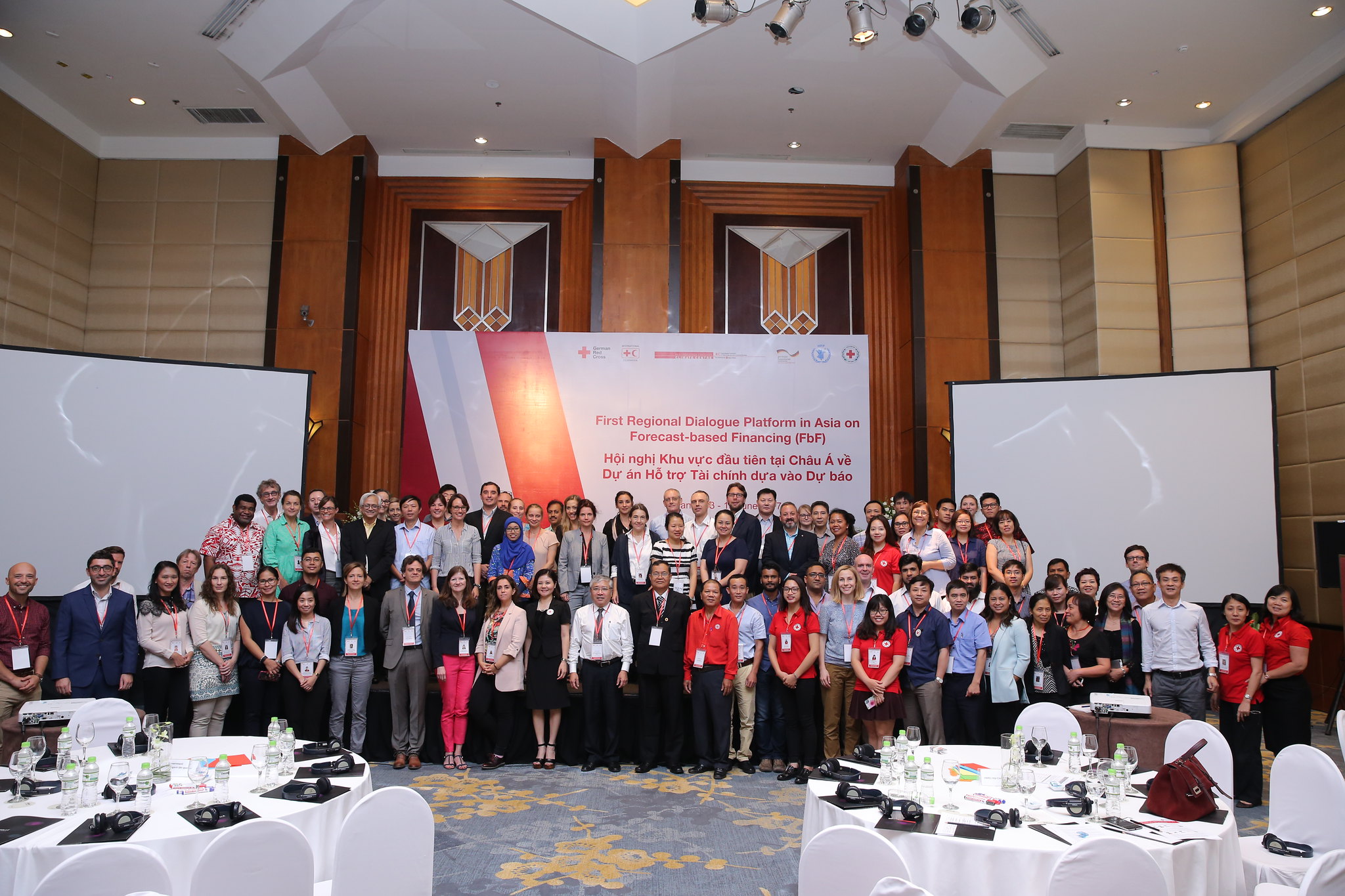Summary
FbF is only as strong as the National Society supporting it. One important part of FbF is the development of EAPs, which requires a certain set of knowledge and skills that should be built within National Societies engaging in FbF. However, EAPs can only have an impact if the National Society is ready to implement them at any given time, within the short time frame available and in many different areas. This requires extensive capacity development, establishment or adjustment of procedures and equipment. In-short the National Society should be “FbF ready”.
FbF as a mechanism is designed to be anchored in the existing structures, strategies and plans of the NS and the DRM system. The process of integrating the FbF mechanism within the National Society (as part of a National DRM system) requires a high level of commitment to forge linkages to preparedness and response, but also to revise and improve its disaster response capacity. FbF builds on its Feasibility Studies and on the PER evaluation at country level.
This chapter recaps recommendations for setting up an FbF system and making the National Society “FBF ready”. It outlines some of the necessary steps a National Society may take to ensure buy-in and ownership of FbF at all levels of the NS and to facilitate understanding of EAPs. These steps can be taken before, during or after the EAP development.
The Red Cross Red Crescent Movement has decades of experience strengthening capacity within NSs.
Building on the FbF feasibility study and if available the results of recent PER auto-evaluations, or other assessments, this chapter outlines ways in which the FbF project team can identify and develop capacity for specific areas which should be strengthened in order for FbF to best contribute to the National Societies’ policies, strategies and plans for preparedness and response.





